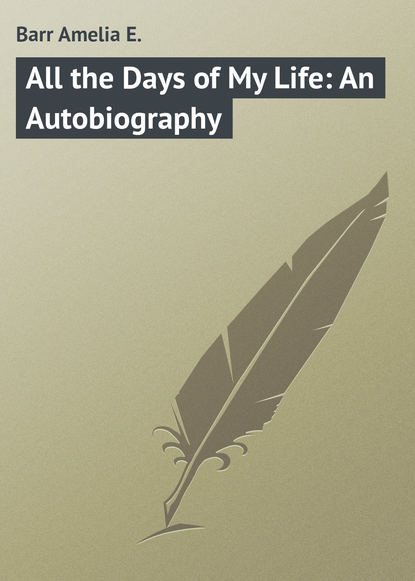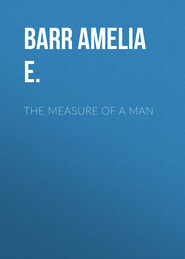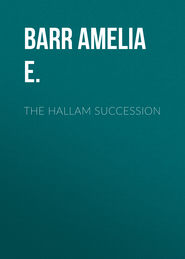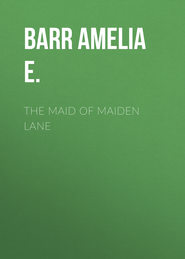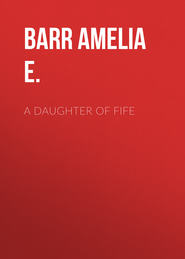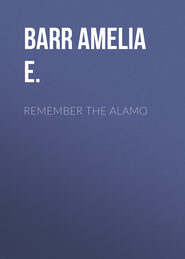По всем вопросам обращайтесь на: info@litportal.ru
(©) 2003-2025.
✖
All the Days of My Life: An Autobiography
Настройки чтения
Размер шрифта
Высота строк
Поля
God has not spoken His last word to me, though I am nearly eighty-one years old. When I have rested my eyes, I am ready for the work, ready for me. And I do not feel it too late, to offer daily the great prayer of Moses for consolation, “Comfort us again, for the years wherein we have seen evil.” As for the cares and exigencies of daily life, I commit them to Him, who has never yet failed me, and
“If I should let all other comfort go,
And every other promise be forgot,
My soul would sit and sing, because I know
He faileth not!
“He faileth not! What winds of God may blow,
What safe or perilous ways may be my lot,
Gives but little care; for this I know,
He faileth not!”
Sustained by this confidence, I can face without fear the limitations of age, and the transition we call death. I have love and friendship around me; I give help and sympathy whenever I can, and I do my day’s work gladly. The rest is with God.
APPENDICES
APPENDIX I
HUDDLESTON LORDS OF MILLOM
If I followed my own desire, instead of the general custom, I should place the genealogical history of the Huddlestons of Millom before my own story and not after it. For to the noble men and women who passed on the name to me, I owe everything that has made my life useful to others, and happy to myself. They conserved for me, upon the wide seas of the world and the mountains and fells of Cumberland, that splendid vitality, which still at eighty-two years of age enables me to do continuously eight and nine hours of steady mental work without sense of fatigue, which keeps me young in heart and brain and body. They transmitted to me their noble traditions of faith in God, and of passionate love for their country. From them I received that eternal hope which treads disaster under its feet, that courage which never fails, because God never can fail, and that natural religious trust which is the abiding foundation of a life that has continually turned sorrow into joy and apparent failure into certain success.
I honor all my predecessors as I honor my father and my mother, and I have had the promise added to that commandment. “My days have been long in the land which the Lord, my God, has given me.” These few natal notes are all I now know of them, but I have a sure faith that in some future the bare facts will grow into the living romances they only now hint of. I shall know them all and all of them will know me; and we shall talk together of the different experiences we met on our widely different roads to the same continuing home – a home not made with hands, eternal in the heavens.
A. E. B.
HUDDLESTON LORDS OF MILLOM
The pedigree of this very ancient family is traced back to five generations before the Conquest. The first, however, of the name who was lord of Millom was,
Sir John Huddleston, Knight, who was the son of Adam, son of John, son of Richard, son of Reginald, son of Nigel, son of Richard, son of another Richard, son of John, son of Adam, son of Adam de Hodleston in co. York. The five last named according to the York MS were before the Conquest.
Sir John de Hodleston, Knight, in the year 1270 was witness to a deed in the Abbey of St. Mary in Furness. By his marriage with the Lady Joan, Sir John became lord of Anneys in Millom. In the 20th Edward I, 1292, he proved before Hugh Cressingham, justice itinerant, that he possessed JURA REGALIA within the lordship of Millom. In the 25th, 1297, he was appointed by the king warder or governor of Galloway in Scotland. In the 27th, 1299, he was summoned as baron of the realm, to do military service; in the next year, 1300, he was present at the siege of Carlaverock. In the 29th, 1301, though we have no proof that he was summoned, he attended the Parliament in Lincoln, and subscribed as a baron the celebrated letter to the Pope, by the title of lord of Anneys. He was still alive in the 4th of Edward IV, 1311. Sir John had three sons – John who died early, and Richard and Adam.
The Hudlestons of Hutton – John – were descended from a younger branch of the family at Millom, as were the Hudlestons of Swaston co., Cambridge, who settled there temp. Henry VIII, in consequence of a marriage with one of the co-heiresses of the Marquis Montague.
Richard Hudleston, son and heir, succeeded his father. Both he and his brother Adam are noticed in the later writs of Edward I. They were both of the faction of the Earl of Lancaster, and obtained in the 7th Edward II, 1313, a pardon for their participation with him in the death of the king’s favorite, Gaveston. Adam was taken prisoner with the earl in the Battle of Boroughbridge in 1322, where he bore for arms gules fretted with silver, with a label of azure. Richard was not at that battle and in the 19th of the king, 1326, when Edward II summoned the Knights of every county to the Parliament at Westminster, was returned the first among the Knights of Cumberland. He married Alice, daughter of Richard Troughton in the 13th, Edward II, 1319-1320, and had issue.
John Hudleston, son of the above named Richard, who succeeded his father in 1337, and married a daughter of Henry Fenwick, lord of Fenwick, co. of Northumberland.
Richard Hudleston, son of John.
Sir Richard Hudleston, Knight, served as a banneret at the Battle of Agincourt, 1415. He married Anne, sister of Sir William Harrington K. G., and served in the wars in France, in the retinue of that knight.
Sir John Hudleston, Knight, son of Richard, was appointed to treat with the Scottish commissioners on border matters in the 4th Edward IV, 1464; was knight of the shire in the 7th, 1467; appointed one of the conservators of the peace on the borders in the 20th, 1480; and again in the 2nd of Richard, 1484; and died on the 6th of November in the 9th of Henry VII, 1494. He married Joan, one of the co-heirs of Sir Miles Stapleton of Ingham in Yorkshire. He was made bailiff and keeper of the king’s woods and chases in Barnoldwick, in the county of York; sheriff of the county of Cumberland, by the Duke of Gloucester for his life steward of Penrith, and warden of the west marches. He had three sons —
1. Sir Richard K. B., who died in the lifetime of his father, 1st Richard III. He married Margaret, natural daughter of Richard Nevill, earl of Warwick, and had one son and two daughters, viz:
Richard married Elizabeth, daughter of Lady Mabel Dacre, and died without issue, when the estates being entailed passed to the heir male, the descendant of his Uncle John.
Johan married to Hugh Fleming, Esq., of Rydal.
Margaret married to Launcelot Salkeld, Esq., of Whitehall.
2. Sir John.
3. Sir William.
Sir John Hudleston, second son of Sir John and Joan his wife, married Joan, daughter of Lord Fitz Hugh, and dying the 5th Henry VIII, 1513-1514, was succeeded by his son.
Sir John Hudleston K. B., espoused firstly the Lady Jane Clifford, youngest daughter of Henry, earl of Cumberland, by whom he had no issue. He married secondly Joan, sister of Sir John Seymour, Kn’t, and aunt of Jane Seymour, queen consort of Henry VIII, and by her he had issue —
Anthony his heir.
Andrew, who married Mary, sister and co-heiress of Thomas Hutton, Esq., of Hutton – John, from whom descended the branch at that mansion.
A daughter who married Sir Hugh Askew, Kn’t, yeoman of the cellar to Henry VIII, and Ann, married to Ralph Latus, Esq., of the Beck.
Sir John, died 38th, Henry VIII, 1546-7.
Anthony Hudleston, Esq., son and heir, married Mary, daughter of Sir William Barrington, Knight, and was succeeded by his son
William Hudleston, Esq., knight of the shire in the 43rd Elizabeth, who married Mary, daughter of Bridges, Esq., of Gloucestershire.
Ferdinando Hudleston, son and heir, was also knight of the shire in the 21st James I. He married Jane, daughter of Sir Ralph Grey, knight of Chillingham, and had issue nine sons – William, John, Ferdinando, Richard, Ralph, Ingleby, Edward, Robert, and Joseph; all of whom were officers in the service of Charles I. He was succeeded by his eldest son.
Sir William Hudleston, a zealous and devoted royalist, who raised a regiment of horse for his sovereign, and also a regiment of foot; the latter he maintained at his own expense during the whole of the war. For his good services and his personal bravery at the battle of Edgehill, where he retook the royal standard, he was made a knight banneret by Charles I on the field. He married Bridget, daughter of Joseph Pennington, Esq., of Muncaster. He had issue, besides his successor, a daughter, Isabel, who married Richard Kirkby, Esq., of Furness, and was succeeded by his son.
Ferdinand Hudleston, Esq., who married Dorothy, daughter of Peter Hunley, merchant of London, and left a sole daughter and heiress Mary, who married Charles West, Lord Delawar, and died without issue. At his decease the representation of his family reverted to
Richard Hudleston, Esq., son of Colonel John Hudleston, Esq., second son of Ferdinando Hudleston, and Jane Grey his wife. This gentleman married Isabel, daughter of Thomas Hudleston, Esq., of Bainton, co. York, and was succeeded by his son,
Ferdinando Hudleston, Esq., who married Elizabeth, daughter of Lyon Falconer, Esq., co. Rutland, by whom he had issue,
William Hudleston, Esq. This gentleman married Gertrude, daughter of Sir William Meredith, Bart., by whom he had issue, two daughters, Elizabeth and Isabella. Elizabeth, the elder, married Sir Hedworth Williamson, Bart., who in 1774 sold the estate for little more than 20,000 pounds to Sir James Lowther, Bart. – by whom it was devised to his successor, the Earl of Lonsdale.
Millom Castle, considerable remains of which are still in existence, is pleasantly situated in the township of Millom Below, near the mouth of the Duddon. It was fortified and embattled in 1335 by Sir John Hudleston, who obtained a license from the King for that purpose. In ancient times it was surrounded by a fine park. Here for many centuries the lords of Millom held their feudal pomp and state undisturbed by war’s tempestuous breath, from which the more northerly parts of the country suffered so severely, and so often; and we do not hear that the Castle was ever attacked previous to the wars of the Parliament, when it appears to have been invested, though no particulars respecting the occurrence have been recorded. It is at this period that the old vicarage house, which was in the neighborhood of the Castle, was pulled down, lest the rebels should take refuge therein. Mr. Thomas Denton tells us, that in 1688 the castle was much in want of repair. He also informs us that the gallows where the lords of Millom exercised their power of punishing criminals with death stood on a hill near the castle, and that felons had suffered there shortly before the time at which he was writing. He describes the park as having within twenty years abounded with oak, which to the value of 4,000 pounds had been cut down to serve as fuel at the iron forges. When John Denton wrote the castle appears to have been in a partly ruinous state, although the lords still continued to reside there occasionally. In 1739 the old fortress appears to have been in much the same condition as it is in our own times. In 1774 when Nicholson and Burn published their history, the park was well stocked with deer, and this state of things continued till the year 1802, when it was disparked by the earl of Lonsdale. The old feudal stronghold of the Boyvilles and Hudlestons now serves as a farmhouse, the principal part remaining is a large square tower, formerly embattled, but at present terminated by a plain parapet. The chief entrance appears to have been in the east front by a lofty flight of steps. In a wall of the garden are the arms of Hudleston, as also in the wall of an outhouse. On the south and west sides traces of the moat are still visible. The lordship of Millom still retains its own coroner.
After the sale of Millom to the Earl of Lonsdale, which occurred only twenty-five years before the birth of my father, many of the Huddleston family emigrated to Newfoundland and to the American colonies. There were Huddlestons settled in Texas who had fought with General Sam Houston. They were large land owners and had patriarchal wealth in cattle and horses. I know this, for I wrote their assessments during the last two years of the Civil War. A California editor told me three years ago that there were Huddlestons among the rich miners of that state; and there is a notable branch of the family descended from Valentine Huddleston who came to the Plymouth colony in A.D. 1622. This gentleman is among the list of the proprietors of Dartmouth. He had two sons the eldest of whom bore the family name of Henry. Nothing can be more clear and straight than the pedigree of this branch; and its direct descendant is at the present day one of New York’s most esteemed and influential citizens.
THE LORDS OF MILLOM
From Bulmer & Co.’s “History and Directory of Westmoreland,” Millom Parish, page 154
The Boyvilles held the seigniory in heir male issue from the reign of Henry I to the reign of Henry III, a space of one hundred years, when the name and family ended in a daughter, Joan de Millom, by her marriage with Sir John Huddleston (No. 5, Foot-Prints), conveyed the inheritance to that family, with whom it remained for about five hundred years. The Huddlestons were an ancient and honorable family who could trace their pedigree back five generations before the Conquest. The lords of Millom frequently played important parts in the civil and military history of the country. Richard and Adam (Nos. 6 and 7, Foot-Prints), reign of Edward II, were implicated in the murder of Gaveston, the king’s favorite, and the latter was taken prisoner at the battle of Borough Bridge in 1322. Sir Richard Huddleston (No. 12, Foot-Prints) served as a banneret at the battle of Agincourt in 1415. Sir John Huddleston was appointed one of the conservators of the peace on the borders in 1480, high sheriff of Yorkshire, steward of Neurith, and warden of the West Marches.
Sir William Huddleston (No. 17, Foot-Prints), a zealous and devoted royalist, raised a regiment of horsemen for the service of the sovereign, as also a regiment of footmen, and the latter he maintained at his own expense. At the battle of Edge Hill he retook the standard from the Cromwellians, and for this act of personal valor he was made a knight banneret by the king on the field.
William Huddleston (not No. 17, Foot-Prints), the twenty-first of his family who held Millom, left two daughters, Elizabeth and Isabella. The former of whom married Sir Hedworth Williamson, Bart., who in 1774 sold the estate for a little more than £20,000 to Sir James Lowther, Bart., from whom it has descended to the present Earl of Lonsdale.





